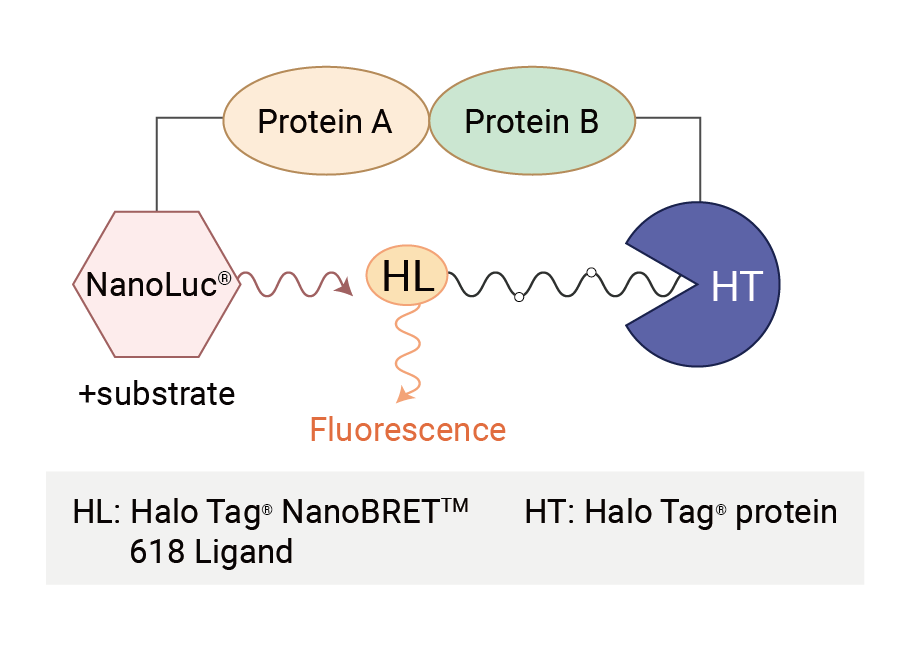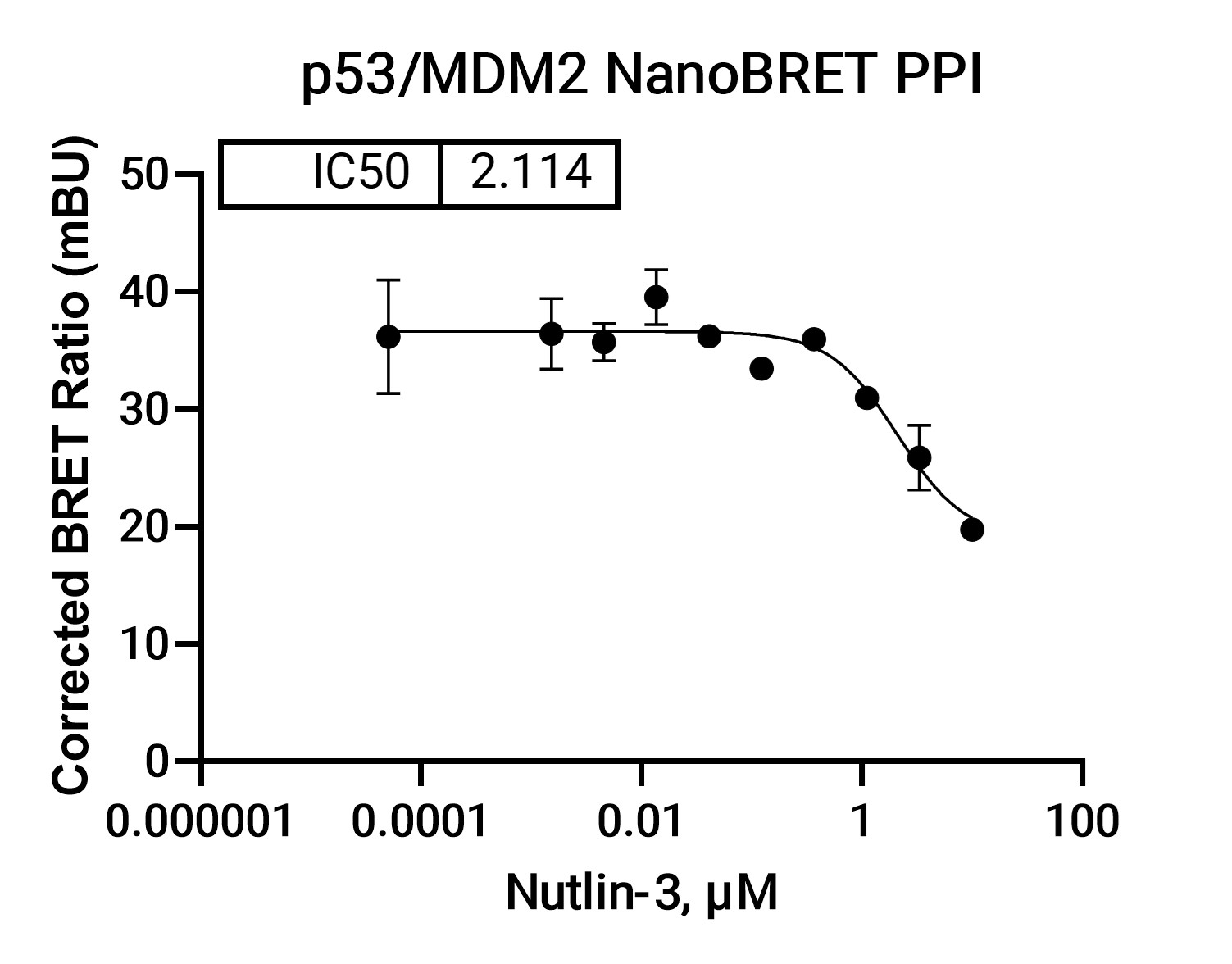The NanoBRET Protein-Protein Interaction (PPI) Assay is a live-cell, real-time method for studying protein-protein interactions, designed to assess how small molecules or biological factors affect these interactions. Using NanoLuc luciferase and HaloTag ligand (HL), this assay enables highly sensitive detection of both induction and inhibition of PPIs, providing comprehensive insights into molecular interactions.
In this assay, one protein is tagged with NanoLuc luciferase (energy donor), and the interacting protein is fused to HaloTag (acceptor). When the proteins interact, the HaloTag ligand (HL) binds to HaloTag and comes into close proximity with NanoLuc, leading to BRET and generating a detectable fluorescent signal.
Induction of PPIs: If a small molecule promotes the interaction between the two proteins, the proximity between NanoLuc and HaloTag increases, resulting in a stronger BRET signal.
Inhibition of PPIs: If a small molecule disrupts or inhibits the interaction, the distance between NanoLuc and HaloTag increases, causing the BRET signal to decrease.

Thus, the assay can capture both positive and negative modulation of protein interactions, making it suitable for studying the full spectrum of PPI dynamics.
✅ Full-length protein interactions: Study PPIs involving full-length proteins in their native conformations within live cells.
✅ High sensitivity: The NanoLuc-HaloTag system delivers high sensitivity with low background, allowing detection of even weak or transient interactions.
✅ High-throughput compatible: Optimized for 96- and 384-well plates, facilitating large-scale screening and drug discovery.

Physiological relevance: Study PPIs in live cells using full-length proteins, ensuring that results reflect native biological conditions.
Comprehensive interaction analysis: Capture both PPI induction and inhibition, making the assay versatile for studying a wide range of interaction types and drug effects.
Ideal for screening: Suitable for high-throughput screening (HTS) of modulators that influence PPIs, enabling efficient drug discovery.
We value your inquiries and are here to provide you with tailored solutions for your drug discovery and development needs. Whether you have questions, require more information, or are interested in discussing potential collaborations, our team of experts is just a message away.
Feel free to reach out to us.